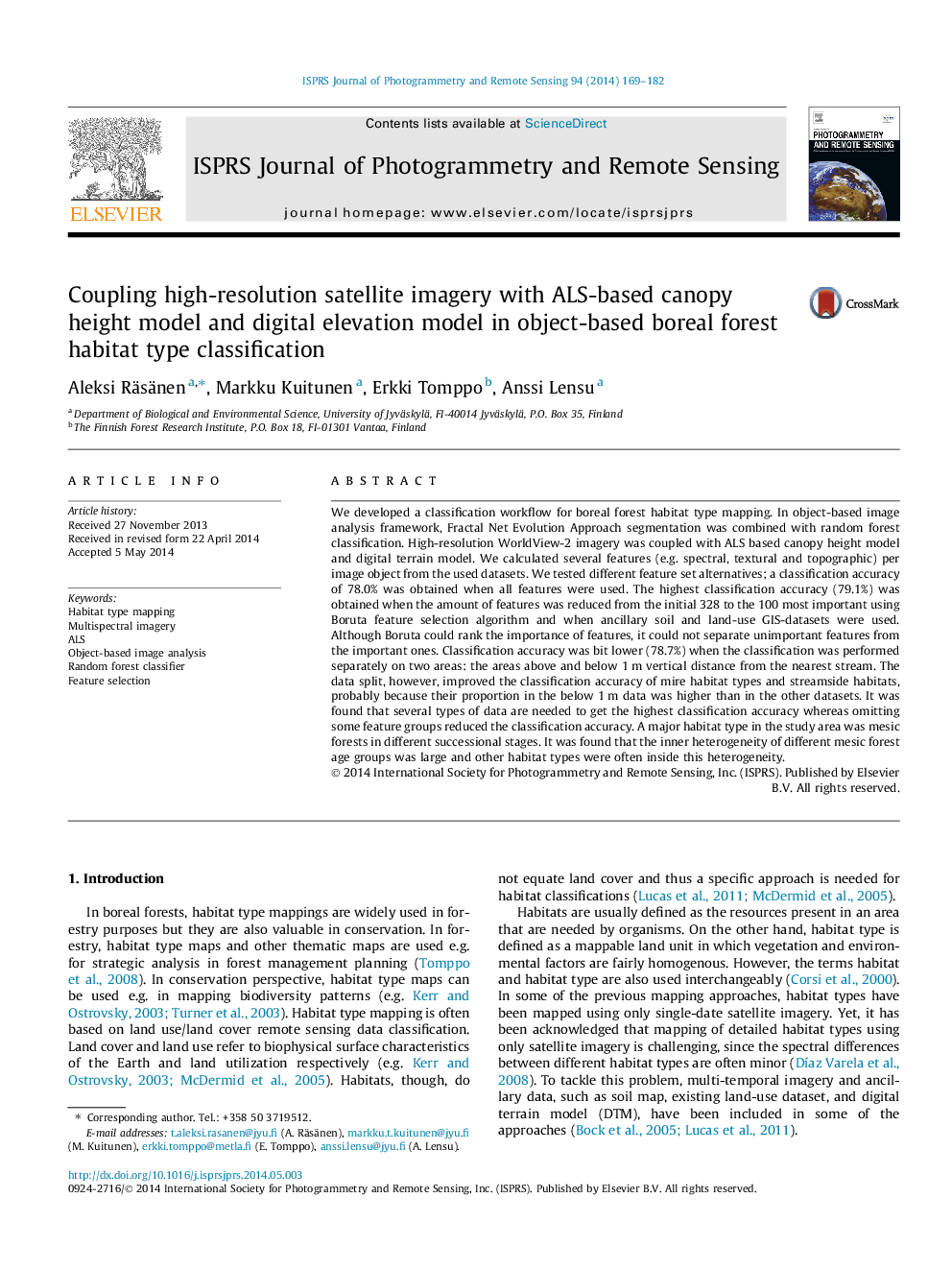| کد مقاله | کد نشریه | سال انتشار | مقاله انگلیسی | نسخه تمام متن |
|---|---|---|---|---|
| 6949632 | 1451280 | 2014 | 14 صفحه PDF | دانلود رایگان |
عنوان انگلیسی مقاله ISI
Coupling high-resolution satellite imagery with ALS-based canopy height model and digital elevation model in object-based boreal forest habitat type classification
دانلود مقاله + سفارش ترجمه
دانلود مقاله ISI انگلیسی
رایگان برای ایرانیان
کلمات کلیدی
موضوعات مرتبط
مهندسی و علوم پایه
مهندسی کامپیوتر
سیستم های اطلاعاتی
پیش نمایش صفحه اول مقاله

چکیده انگلیسی
We developed a classification workflow for boreal forest habitat type mapping. In object-based image analysis framework, Fractal Net Evolution Approach segmentation was combined with random forest classification. High-resolution WorldView-2 imagery was coupled with ALS based canopy height model and digital terrain model. We calculated several features (e.g. spectral, textural and topographic) per image object from the used datasets. We tested different feature set alternatives; a classification accuracy of 78.0% was obtained when all features were used. The highest classification accuracy (79.1%) was obtained when the amount of features was reduced from the initial 328 to the 100 most important using Boruta feature selection algorithm and when ancillary soil and land-use GIS-datasets were used. Although Boruta could rank the importance of features, it could not separate unimportant features from the important ones. Classification accuracy was bit lower (78.7%) when the classification was performed separately on two areas: the areas above and below 1Â m vertical distance from the nearest stream. The data split, however, improved the classification accuracy of mire habitat types and streamside habitats, probably because their proportion in the below 1Â m data was higher than in the other datasets. It was found that several types of data are needed to get the highest classification accuracy whereas omitting some feature groups reduced the classification accuracy. A major habitat type in the study area was mesic forests in different successional stages. It was found that the inner heterogeneity of different mesic forest age groups was large and other habitat types were often inside this heterogeneity.
ناشر
Database: Elsevier - ScienceDirect (ساینس دایرکت)
Journal: ISPRS Journal of Photogrammetry and Remote Sensing - Volume 94, August 2014, Pages 169-182
Journal: ISPRS Journal of Photogrammetry and Remote Sensing - Volume 94, August 2014, Pages 169-182
نویسندگان
Aleksi Räsänen, Markku Kuitunen, Erkki Tomppo, Anssi Lensu,